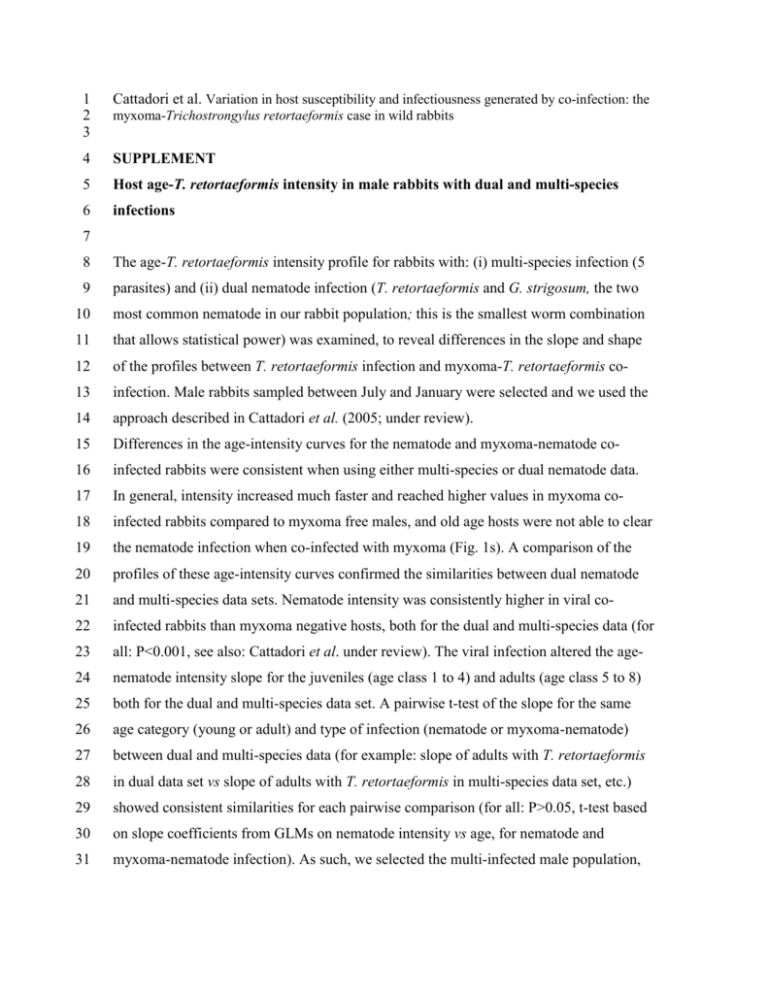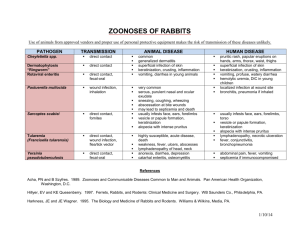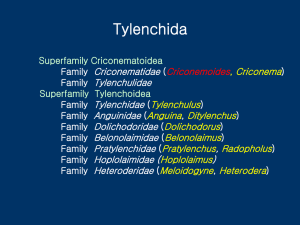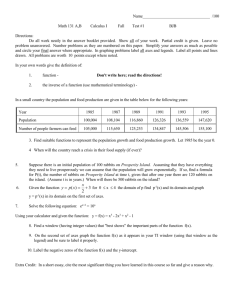When looking at sources of variation in infectious disease dynamics
advertisement

1 2 3 Cattadori et al. Variation in host susceptibility and infectiousness generated by co-infection: the 4 SUPPLEMENT 5 Host age-T. retortaeformis intensity in male rabbits with dual and multi-species 6 infections myxoma-Trichostrongylus retortaeformis case in wild rabbits 7 8 The age-T. retortaeformis intensity profile for rabbits with: (i) multi-species infection (5 9 parasites) and (ii) dual nematode infection (T. retortaeformis and G. strigosum, the two 10 most common nematode in our rabbit population; this is the smallest worm combination 11 that allows statistical power) was examined, to reveal differences in the slope and shape 12 of the profiles between T. retortaeformis infection and myxoma-T. retortaeformis co- 13 infection. Male rabbits sampled between July and January were selected and we used the 14 approach described in Cattadori et al. (2005; under review). 15 Differences in the age-intensity curves for the nematode and myxoma-nematode co- 16 infected rabbits were consistent when using either multi-species or dual nematode data. 17 In general, intensity increased much faster and reached higher values in myxoma co- 18 infected rabbits compared to myxoma free males, and old age hosts were not able to clear 19 the nematode infection when co-infected with myxoma (Fig. 1s). A comparison of the 20 profiles of these age-intensity curves confirmed the similarities between dual nematode 21 and multi-species data sets. Nematode intensity was consistently higher in viral co- 22 infected rabbits than myxoma negative hosts, both for the dual and multi-species data (for 23 all: P<0.001, see also: Cattadori et al. under review). The viral infection altered the age- 24 nematode intensity slope for the juveniles (age class 1 to 4) and adults (age class 5 to 8) 25 both for the dual and multi-species data set. A pairwise t-test of the slope for the same 26 age category (young or adult) and type of infection (nematode or myxoma-nematode) 27 between dual and multi-species data (for example: slope of adults with T. retortaeformis 28 in dual data set vs slope of adults with T. retortaeformis in multi-species data set, etc.) 29 showed consistent similarities for each pairwise comparison (for all: P>0.05, t-test based 30 on slope coefficients from GLMs on nematode intensity vs age, for nematode and 31 myxoma-nematode infection). As such, we selected the multi-infected male population, 1 from the July-January period, which provides larger sample size and stronger statistical 2 power. 3 00 11 2 3 4 55 66 77 88 2 3 4 00 11 22 33 44 55 66 77 8 8 B . A . Mean parasite intensity ln(x+1) 4 Worm-Virus Worm 0 1 0 1 2 2 3 3 4 4 5 5. 6 6 7 7 8 8 9 10 9 10 0 1 0 1 2 2 3 3 4 4 5 5. 6 6 7 7 8 8 9 10 9 10 Host age classes 5 6 Figure 1s. Age-T. retortaeformis intensity relationships in male rabbits with nematode 7 (triangles) and myxoma-nematode co-infection (squares), averaged (±s.e.) over 26 years 8 of data for the July-January period. Two data sets were used: panel A- multi-species 9 infected male rabbits (fig. 1 in the manuscript), panel B- T. retortaeformis-G. strigosum 10 dual infected males. A cubic spline curve is fitted to the relationship between parasite 11 intensity (ln(x+1)) and host age classes. 2





